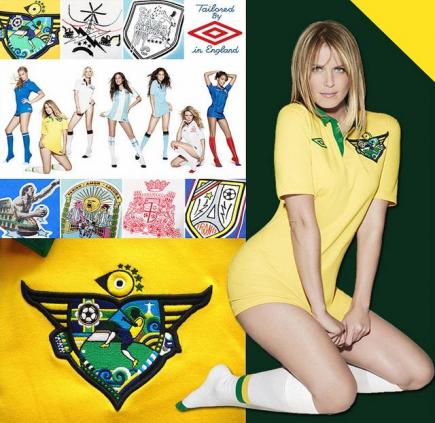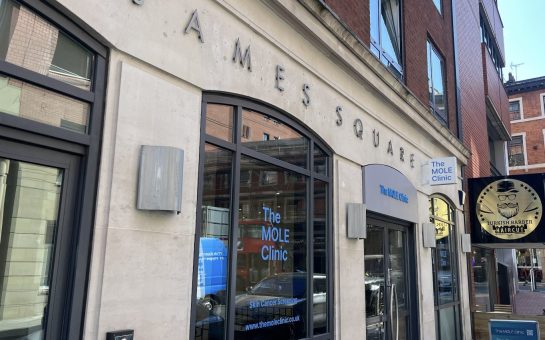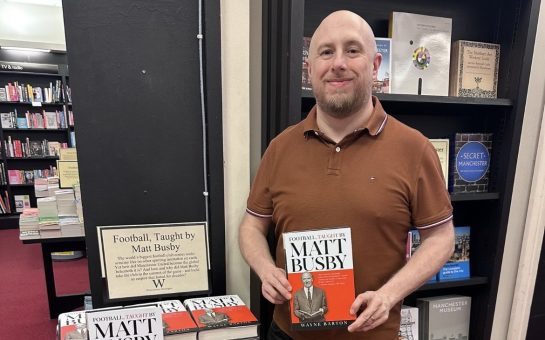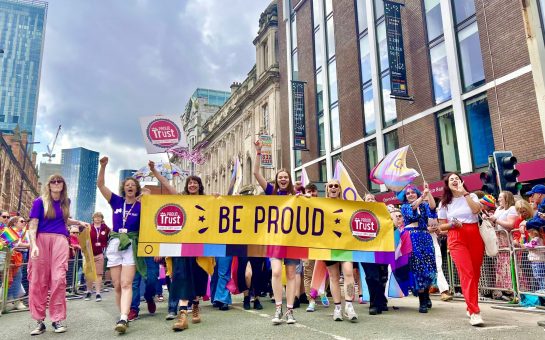On April 23 1924 King George V opened the British Empire Exhibition at Wembley Stadium to celebrate Britain’s colonial dynasties around the world.
The show was the largest to be staged anywhere in the world at the time, attracted 27million visitors and was a resounding success.
Just a month later nearly 200 miles away from Wembley on the outskirts of Manchester in Wilmslow, one man took the first step towards his building his own British dynasty that would go on to be just as celebrated.
The man’s name was Harold Humphries, a 22-year-old with a background in tailoring and fashion.
Humphries had identified football as a huge cultural phenomenon a year earlier when the first ever FA Cup final at Wembley in 1923 contested by Bolton Wanderers and West Ham United was watched by over 200,000 people.
On May 24 1924 he set about transferring his expertise in fashion and tailoring to the world of sport and formed a company that would go on to be a constant in some of football’s greatest and most iconic moments over the following decades.
That company named after Harold and his brother Wallace, who assisted him, was ‘Umbro’.
Of course football has encountered change of stratospheric proportions since 1924 – back then the World Cup did not even exist and Huddersfield Town were league champions.
But amid the perennial state of flux in which football has now found itself in for decades, the legacy of Harold Humphries remains and this year Umbro celebrates its 90th anniversary.

SEXY FOOTBALL: Umbro have always pushed the boundaries.
Humphries’ contemporaries need no excuse to bring up their founding father in conversation as Chris Dolan, part of Umbro’s PR and Marketing team for three years, demonstrated.
“He was a pioneer,” Chris told MM. “Media at the time called him the ‘Dior of football’ because of the really smart aesthetic that he kitted people out with.
“Harold had this expression ‘look smart play smart’ so if you looked good it gave you a bit of a performance advantage and that’s something that has still carried through the company throughout the years.”
Seemingly a very quotable man, one particular musing from the founder of Umbro stands out above the rest.
To such an extent that it is even immortalised on the walls of Umbro HQ in Manchester:
“There are three things which constitute the ability to succeed – enthusiasm, tenacity and sheer damned cheek – but all in good measure.”
It is this unique blend of unwavering confidence and unrivalled determination as outlined by Humphries that has been the key to Umbro’s longevity, according to Chris.
“That is the personality of the brand,” he said. “It is a personality that other brands don’t have.”
Indeed some of the biggest personalities ever to walk on to a football pitch have enjoyed their finest moments in Umbro.
In the 60s and 70s George Best wore Umbro in his heyday for Manchester United as he inspired them to their first European Cup in 1968 and scored 137 goals during a 13-year spell at Old Trafford.
Best was the first footballer whose celebrity status off the field at times transcended his popularity on it and the playboy lifestyle he led was certainly one of ‘sheer damned cheek’.
Another flawed genius and the player of his generation, Paul Gascoigne, also wore Umbro for two of his most memorable moments in an England shirt.
Both Gascoigne’s tears following England’s penalty shoot-out exit against Germany in the semi-finals of Italia 90 and his famous dentist chair celebration after a sublime goal against Scotland in Euro 96- two moments encapsulating first the pain and then joy football can bring- were both in Umbro strips.
Personalities like those of Best and Gascoigne are scarce in the ultra-professional modern game but in the 21st century there is one eccentric Italian who stands out from the crowd and the moment that he is arguably most well-known for came in … yeah Umbro.
The Italian is of course Mario Balotelli who at Old Trafford in the Manchester Derby in October 2011 had the ‘sheer damned cheek’ to score twice as City trounced United 6-1.
Days earlier Balotelli had made headlines for the wrong reasons after setting off fireworks in his home and in a calculated swipe back at his critics he pulled up his Umbro jersey to reveal the now classic words: ‘why always me?’ on a t-shirt underneath.
Clothes only have as much character as the people wearing them and the fact that Umbro has been worn by some of football’s most charismatic and enigmatic figures over the years has only enhanced the brand personality that employees like Chris speak about.
It is a personality that has seen the brand grow in popularity around the world something that still rings true today with five teams in South America’s Copa Libertadores wearing Umbro, making it the most popular kit manufacturer in that tournament.
But whether they are producing kits for teams in South America or Stockport (they currently provide Stockport County’s kit), Chris stressed that Umbro always consider a team’s shirt to be of paramount importance.
“The shirts are incredibly important,” he said. “They are an incredibly important part of a football club because it is the club’s visual identity and visual reference.”
“Whether you choose to wear a replica shirt or not, it is an important part of the make-up of the team.
“The player’s wear it every week obviously and from a fan point of view you want players to wear the shirt with pride.
“You hear that at football grounds if you are at the game it’s about having pride for the shirt and you want players to feel special every time they pull that shirt on.”
Many a team have worn Umbro jerseys with pride over the years from England as they lifted the Jules Rimet Trophy in 1966 to Brazil who won four World Cups in kits from the British manufacturer.
At club level Umbro has also provided the uniform for the proudest moments in the recent history of both Manchester clubs.
United’s historic treble in 1999 came in Umbro, as did Manchester City’s astonishing last-day Premier League title win in 2012.
With two of the world’s biggest football clubs on its doorstep, Chris believes Manchester has always been an appropriate location for Umbro to be based.
“Manchester is a huge footballing city and being based here helps bring out the Englishness and Britishness of the brand which is there for all to see,” he said.
“But Umbro is a global brand and that’s the really exciting thing about working here.
“You can look out of the window and see Manchester but beyond these four walls and what the eye can see there’s a brand that is worn by players and teams all round the world.
“So that is something that’s really exciting to be a part of.”
However with United, City, England and Brazil all no longer wearing Umbro are those magical moments a thing of the past for Umbro?
No according to Chris, who says that although the brand is turning 90 it still has plenty to look forward to.
“We don’t just have to look back it’s about looking forward (with) new players, new teams and new moments,” he said.
“That’s the exciting thing you don’t know what’s going to happen in football, it’s unpredictable so we’re looking forward to the next moment really.”
One of those new teams is Everton after they agreed a deal with Umbro, who will now provide them with kit from next season until 2020, back in February.
With the Toffees are seemingly on the cusp of greatness under Roberto Martinez, the next iconic Umbro moment may not be far away.



